Anterior Cruciate Ligament Reconstruction
The ACL (Anterior Cruciate Ligament) is a major stabilizing ligament in the knee. A ligament is a dense band of connective tissue, like a rope or cord. The ACL prevents abnormal movement of the thighbone (femur) on the shinbone (tibia). People with ACL tears often complain that their leg “gives out” and feel that they are unable to trust their leg, especially when they pivot, turn, or twist. This sensation is called “instability.” Instability can occur during sports and everyday activities.
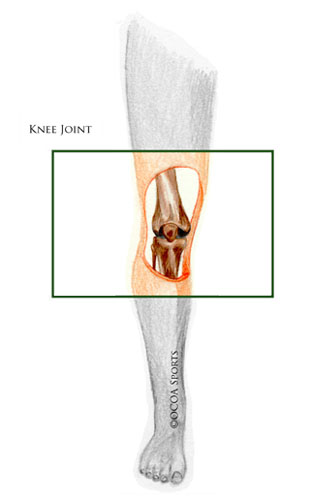
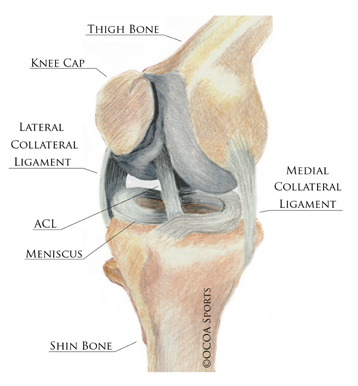
ACL injury is very common. They often occur as a result of an abrupt twisting motion during sports or a fall. Often people say they twisted their knee, felt a pop, and then were unable to walk. Many report that the knee quickly became swollen and filled with fluid.
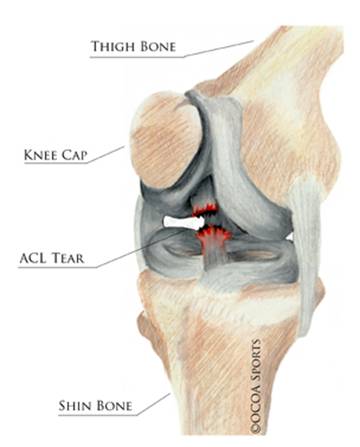
How to Diagnose ACL Injury.
To diagnose an ACL tear a doctor will take a history and perform a physical examination. Certain abnormal movements occur in the knee after an ACL tear and the doctor can feel these movements during the examination. X-rays are performed and often an MRI is ordered. The X-rays show the bones of the knee, but do not show the ACL. The ACL is shown on an MRI.
Treatment options vary from physical therapy, to bracing, to surgery. Options are best discussed with the doctor. Often, people who wish to resume an active lifestyle choose to have surgery. Some patients need to have physical therapy before surgery to improve motion or strength.
Occasionally, a torn meniscus can occur along with an ACL tear. Generally, both injuries are addressed during the same surgery.
MRI of a Normal ACL
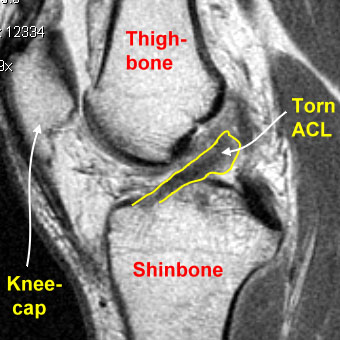
MRI of a Torn ACL
ACL Surgery
The surgery is done with the help of the arthroscope. The arthroscope is a camera that allows a surgeon to visualize the interior of the knee.
ACL surgery is called a “reconstructive surgery.” That means that the torn ACL is removed and a new one is placed. A torn ACL will not heal back together, either on its own or if a doctor stitches the torn ends together. Therefore, in order for ACL function to be restored, a new ACL must be made. A new ACL is made with a graft, which will serve as a replacement ligament. A graft is a piece of tissue from another part of the body or a cadaver. The graft is surgically placed in the proper location in the knee to function as a new ACL. You and your doctor will decide which graft choice is best for you.
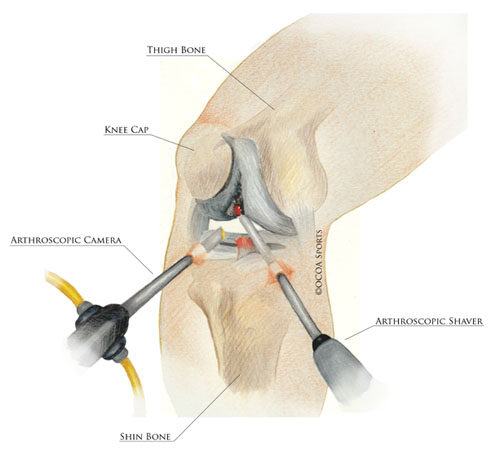
Arthroscopic camera and tools in the knee
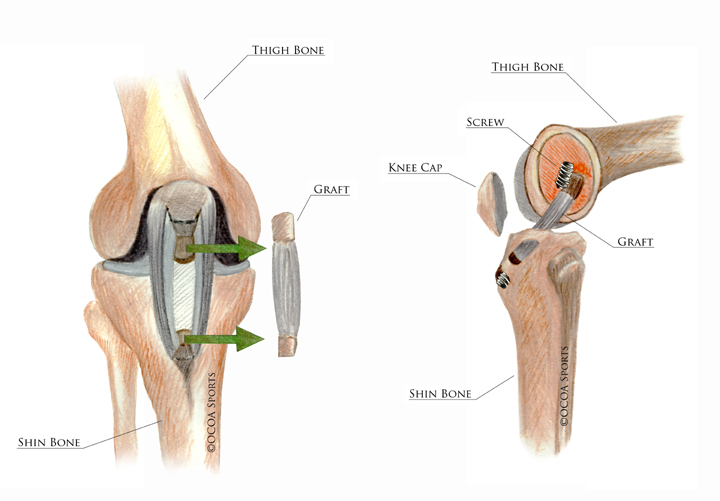
Most of the surgery is done through small incisions with small tools, but some larger incisions are needed to obtain the graft and place it in its new location. During surgery, the torn ends of the ACL are removed and tunnels are drilled in the shinbone and thighbone. These tunnels allow placement of the graft in the proper location to become the new ACL. The graft is held in place with metal or absorbable screws, stitches, or both. Over time, the graft ligament heals to the surrounding tissue and functions as a new ACL.
A graft ligament is taken from the center of the kneecap tendon and placed in the path of the old ACL.
Patients usually go home the same day. Patients often do not remember the surgery occurring, nor do they feel any pain during the surgery. They usually remember falling asleep and waking up in the recovery room. Often, a brace is placed on the leg at the end of the surgery, and the patient will wake up with the brace on.
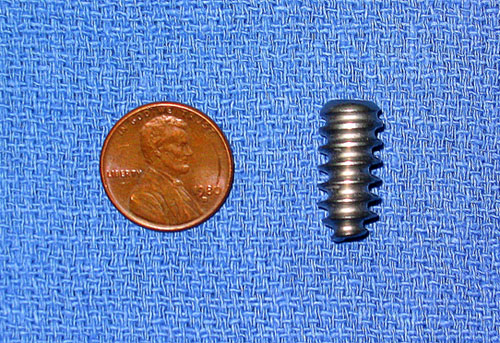
Metal screw used to keep the graft ligament in place
According to the Anesthesia Manual of Surgical Procedures, pain from ACL surgery is rated at 6 out of 10 on a scale of 1 to 10, with 1 being no pain and 10 being the worst pain. Pain medication is given to control pain and keep patients comfortable after surgery. Pain predictably improves after surgery, especially after the first week.
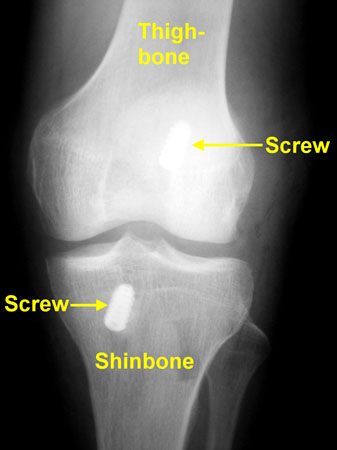
Front view X-Ray after ACL Reconstruction showing screw placement
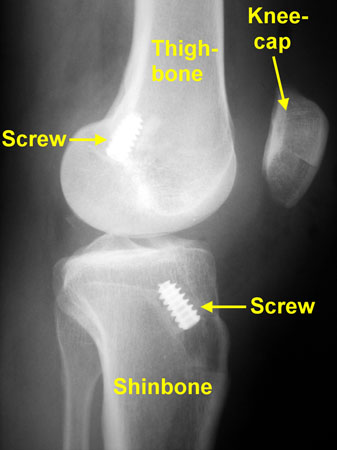
Side view X-Ray after ACL Reconstruction showing screw placement
What to Expect after ACL Reconstruction Surgery.
Your doctor may prescribe a brace after surgery. If so, you will probably wake up from surgery with the brace on. Additionally, you may need to use crutches.
Recovery after ACL reconstruction surgery is gradual. Patients usually take one to two weeks off from work. Several months of physical therapy will be required for a proper recovery. Activity restrictions will apply after surgery until appropriate rehabilitation goals have been achieved. Eventually, running and sports will be permitted.
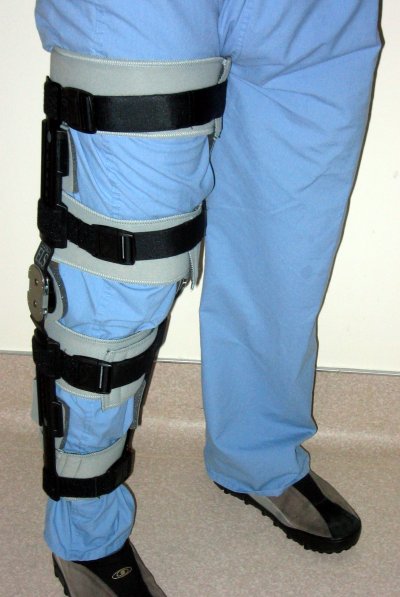
A typical postoperative brace
If you’re suffering from orthopedic pain, whether or not it’s caused by an ACL tear, contact the doctors at Orlin & Cohen, the leading Long Island orthopedic practice. Immediate appointments are available: Schedule yours now.
Illustrations by Brian Forkner



